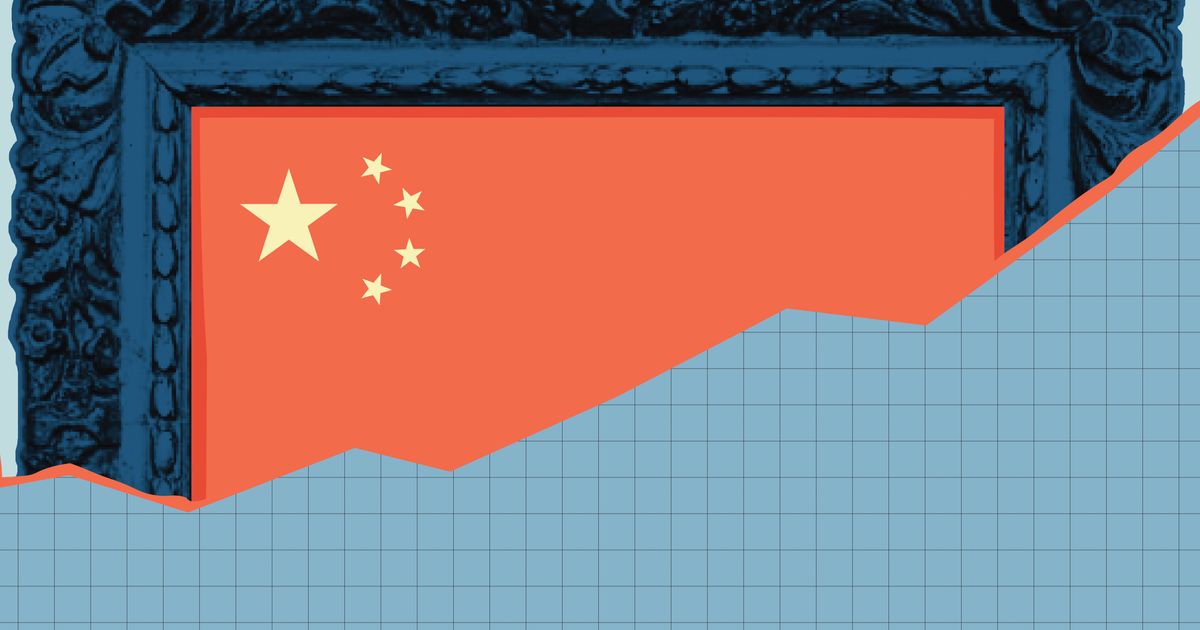
This article was featured in our Art Market Eye newsletter. For monthly commentary, insights and analysis from our art market experts straight to your inbox, sign up here.
While the Western art market is still in recovery mode, the Asian market is forging ahead. Frantic bidding in Hong Kong in December saw new records set at Phillips and at Christie’s for young artists, from Salman Toor, Nicolas Party, Amoako Boafo, Shara Hughes, Dana Schutz and (predictably) the late Matthew Wong, as well as strong prices for older names such as Yayoi Kusama, Yoshitomo Nara and Bernard Frize.
Particularly notable were the strong sales in Hong Kong, when Christie’s 2 December 20th-century, Hong Kong to New York relay auction was far more buoyant in Asia than in the US. And Phillips’ savvy link-up with the Chinese state-owned auction house Poly racked up $66m, its highest total ever in Hong Kong.
Meanwhile, the first art fairs to be held in real life went ahead: in Shanghai in November, 021 and West Bund greeted enthusiastic crowds. Exhibitor Hua Xiaochan of Berlin- and Beijing-based Hua International gallery tells The Art Newspaper: “Commercially, we sold pretty well, and other colleagues told me the same.”
So what is happening here? Why is the Asian art market so strong despite the Covid-19 crisis?
Young collectors
“None of this surprises me,” says Ben Clark of the art advisors Gurr Johns. Between 2017 and 2019 Clark was based in Hong Kong as deputy chairman of Christie’s Asia. “I have been seeing the continual strengthening of the Asian market for at least three years,” he says: “But there has been a definite shift in the past six months. We are seeing far more new young buyers, who have often come into the market through luxury goods or jewellery. For instance, Christie’s previewed part of its sale in the upscale Joyce department store in Hong Kong.”
A number of elements are driving this trend, according to Alexandre Errera, an art advisor based in Hong Kong. “There is so much liquidity here, and in the mainland,” he points out. “There is the well-known gambling instinct of the Chinese buyer, and the desire to invest in tangible assets. There is also a lack of alternative opportunities. And real estate, which used to be the main target for investment, has been a bit softer recently.”
Anna Ning, a private dealer based in Hong Kong, says: “There is a new group of young collectors, in their 30s and 40s; they come often from high tech, they have big spending power and they are very different from the previous generation, much less careful with their money, and clearly focused on contemporary art.”
A other notable feature of this splurge is the shift to buzzy international names. As well as swathes of emerging younger artists, recent sales have featured David Hockney, Albert Oehlen, Jean-Michel Basquiat or George Mathieu.
“Works that are colourful, commercial and easy-on-the-eye are popular,” Errera says. “For the younger buyer here, $500,000 to $1m is small beer; they are learning about these artists on Instagram, from their friends.” And Hua concurs: “Social media is important, and young Asian are travelling, studying and going to galleries and museums—all this influences their buying today.”
“There hasn’t been a shift in the number of top-end buyers in Hong Kong, which remains small,” Clark says; “And some top lots in the sales return to the West. The real change is the blossoming of new younger buyers at a lower level.”
“It’s the young well-educated generation driving sales today!” Hua confirms.
Source link : https://www.theartnewspaper.com/comment/asian-art-market-flies-in-the-face-of-coronavirus












